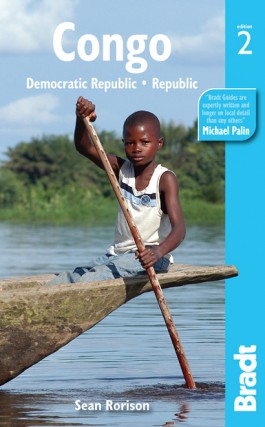Those who make the effort to visit the Congos will be surprised at a genuinely hospitable group of people who have adapted to life in difficult situations. Optimism is easy to find, and foreigners arriving with the same attitude will not be disappointed.
Sean Rorison, author of Congo: the Bradt Guide
The Congos, mysterious, wild and scarred by their troubled history, are proving increasingly irresistible to travellers with a taste for true adventure.
Where guns and disease once ruled, there are now opportunities to discover astonishing national parks and vibrant communities – from the culture and concrete chaos of Kinshasa to the far reaches of volcanic mountains populated by mountain gorillas and okapi.
For more information, check out our guide to Congo😮
Health and safety in the Congos
Health
People new to exotic travel often worry about tropical diseases, but it is accidents that are most likely to carry you off. Road accidents are very common in many parts of the Congos so be aware and do what you can to reduce risks: try to travel during daylight hours, always wear a seatbelt and refuse to be driven by anyone who has been drinking. Listen to local advice about areas where violent crime is rife too.
Preparations
Preparations to ensure a healthy trip to either the DR Congo or Congo require checks on your immunisation status: it is wise to be up to date on tetanus, polio and diphtheria (now given as an all-in-one vaccine, Revaxis, that lasts for ten years), typhoid and hepatitis A. Immunisations against meningococcus and rabies are also likely to be recommended. Proof of vaccination against yellow fever is mandatory for entry into the Congos. The World Health Organization (WHO) recommends that this vaccine should be taken by everyone over nine months of age, although proof of entry is only officially required for those over one year of age. If the vaccine is not suitable for you then obtain an exemption certificate from your GP or a travel clinic although you would have to consider if it was wise to travel to a high-risk country for yellow fever without protection. In the last ten years there has been an almost 100% fatality in non-immune travellers going to yellow fever endemic areas who have contracted the disease.
Immunisation against cholera may be advised for longer visits, especially if you are intending to stay in poorer areas. The oral cholera vaccine (Dukoral) gives about 75% protection and for adults and children over six years of age the course consists of two doses given between one and six weeks apart and at least one week before entering the area. Coverage is said to last for about two years. For those aged between two and six, three doses are needed, which requires a boost after six months.
Travel clinics and health information
A full list of current travel clinic websites worldwide is available on www.istm.org. For other journey preparation information, consult www.travelhealthpro.org.uk (UK) or http://wwwnc.cdc.gov/travel/ (US). Information about various medications may be found on www.netdoctor.co.uk/travel. All advice found online should be used in conjunction with expert advice received prior to or during travel.
Safety
Poverty is rampant, but outright begging is generally only seen in the capitals Kinshasa and Brazzaville; though once a foreign face is seen anywhere across the region other beggars can quickly appear. Citizens of both Congos are less likely to beg than in other countries and are more likely to try and extract cash and gifts through other means – such as overcharging. Set prices in taxis beforehand, and if possible have someone else negotiate prices for long-distance travel and tip them afterwards. When crossing frontiers, it is likely that your luggage will be searched by hand and things can easily go missing. Keep anything of value in your immediate possession, and be vigilant at all times with things you are carrying.
Corruption
The largest problem any visitor will encounter is corruption – it is endemic across the two countries, a veritable institution, and often the only way any officials receive money since when they do get paid it can be months behind schedule. Unfortunately when given a uniform and badge of some sort, people in the Congos will see this as licence to stop and harass anyone and everyone for money – and as a foreigner you can be guaranteed that you will be singled out. Remember that you are primarily seen as an opportunity by people you encounter, and friendliness can go a long way. However, I recommend against offering anything to anyone initially – I do not condone bribery and extortion and this habit can only make matters worse. This is a central problem with the Congos, and unless you want to depart empty-handed, limiting your generosity to those you meet is absolutely necessary.
Remain polite at all times – no-one in the Congos responds well to anger or threats and losing control will only make your situation worse. Realise that random arrests, being pulled aside, and constant poring over your various documents all comes down to a quest for cash. If you keep this in mind and aim to mitigate the amount you need to pay, your journey will be that much more enjoyable.
Being courteous, affable, but ultimately lacking as much money as they want to take from you will be your best approach. Carrying a wallet with a few dollars between checkpoints can get you through tough situations – bring small notes in American dollars, Central African francs (CFA), or Congolese francs (Fc) and hand them a wad of bills and quickly be on your way. They will not count them in front of you – they will be happy that you complied.
Female travellers
Females travelling solo through the Congos are something of a rarity, but if you are obviously foreign, you should take the same precautions as males. However, women’s rights have a very long way to go in these regions and it is not recommend to travel outside of the main towns and cities on your own – make some friends, go with a tour, have someone you trust come along. Going around alone at night is simply asking for trouble.
Some women can be seen in Kinshasa with Congolese boyfriends, and given the dichotomy between men and women it may be necessary to have some sort of male accompaniment to help a foreign woman in her travels around the country. Venture further afield and a solo female traveller will be quite the novelty, but like any traveller who is too far from the radar it could appear as an opportunity too good to pass up for local thieves. While a male might get away with fewer precautions when travelling around the countries alone, a female should make sure that her itinerary is known to someone inside the country. Make arrangements for people to meet you along the way, and involve others in the decision-making process of how to travel around. Hire motorbike and taxi drivers based on recommendations, not simply by flagging one down on the street.
Crime
Overall, crime is as much an issue in the two Congos as it is anywhere else in Africa – take care of your belongings, even in your hotel room, and be careful with your money as well as anything of value. Do not dress too extravagantly when in public and do not carry too much money while out on the town. Be careful at night and secure private transport when out in any town after dark, especially in Kinshasa. Avoid public transport altogether after dark in any of the big cities. Never walk around at night in any major towns, though Congo-Brazzaville is a far safer country than the DR Congo in this respect. Remember that you are more than likely being watched at all times, and wandering alone into a quiet neighbourhood can easily be seen as an opportunity to those less fortunate.
Landmines
Large fields of mines left over from the days of UNITA litter the border between the DR Congo and Angola. Furthermore, there are reports of landmines in Cabinda, and the frontier regions of Congo-Brazzaville. All of these are decades old and, while usually not well marked, are well known by locals. Some farmers in Congo-Brazzaville have refused to work on certain fields because of the landmine risk. A more insidious and difficult aspect of the landmine problem across the Congos exists in the east: in the Kivus, new minefields were laid during the conflicts of 2003 and 2004. Some roads have been mined, and it was an active part of the conflict to plant mines around markets, hospitals, houses and footpaths, deliberately targeting civilians as they went about their daily lives.
Travel and visas in the Congos
Visas
The catch is that if you apply for a tourist visa overseas, they require more documentation regarding your stay – including a confirmed hotel reservation, confirmed round-trip tickets, references from your home country and possibly even a bank statement. Charges for the DR Congo visa can be high, but on the other hand, arriving at a border crossing in the DR Congo with a visa already in hand can save you a large amount of trouble. In my experience none of the documentation required for obtaining a visa in your home country is checked upon arrival in the DR Congo.
Visas are required by every nationality for entering the DR Congo. When crossing from Brazzaville to Kinshasa, Bujumbura to Uvira, and Rwanda into the eastern DR Congo visas may be issued on arrival for a fee – sometimes this has been redacted, however, depending on how relations between their neighbours ebbs and flows. Visas are not available at any airport.
Getting there and away
By air
DR Congo
Kinshasa is the major point of arrival in the region and well connected to the outside world: from Europe there are frequent flights from Paris and Brussels on Air France and SN Brussels Airlines respectively. Regionally there are flights to almost every nearby capital such as Luanda (with TAAG Angolan Airlines), Libreville (with Air Gabon), Douala (with Cameroon Airways), and Hewa Bora Airways does a short hop across the Congo River from Brazzaville. There are also reliable flights on major African airlines to Johannesburg, Addis Ababa and Nairobi with South African Airways, Ethiopian Airlines and Kenya Airways. Lubumbashi is gaining ground as an international port of entry. Arrival by air can be a harrowing experience – if you have people to meet you it will be less of a hassle, but chaos, bribes and random searches of luggage (with things going missing afterwards) are all too common. Have your luggage locked and wrapped prior to checking in, and be prepared for a shock of the senses the moment you depart the aircraft. Have US dollars ready in small denominations, and allow an hour or two for some friendly arguing with officials.
Republic of Congo
To the Republic of Congo, your options are limited for flying. The only airline offering any real frequency to the country is Air France, which flies a small aircraft three times weekly direct from Paris to Pointe Noire. They also fly a much larger plane four times weekly to Brazzaville. However, their prices reflect their monopoly on this route – flying direct from Paris to Congo will set a traveller back a small fortune. You can also reach Brazzaville with Ethiopian Airlines via Addis Ababa, for about a third of the price, when the ticket is booked a few months ahead.
By sea
DR Congo
Passenger liners are a thing of the past to Boma, but cargo shipping is alive and well – though the usual historical problems have never really gone away, with the rail line from Boma to Kinshasa being a little unreliable at the best of times. Nonetheless shipping has become a critical industry from the coast and into Kinshasa.
Republic of Congo
If you need something heavy sent down, you can get it shipped to Pointe Noire quite easily. Pointe Noire is, in fact, the only deep-water port in Africa south of Dakar and therefore sees plenty of ships passing through.
Overland and border crossings
DR Congo
The DR Congo has numerous border crossings with its nine neighbours, and most of them will let foreigners cross. To Congo-Brazzaville, you can either take the public ferry for very little money or arrange a ride on a canôt rapide, which costs around US$20 and includes a person who will handle your border formalities for you – which is a good thing in a country where doing it yourself can mean any number of extra ‘fees’.
To the Central African Republic, the three primary crossings from northern DR Congo into the CAR are from Bangui to Zongo, Mobaye and Bangassou. Relations with the CAR have effectively returned to normal, but crossing to either Mobaye or Bangassou should be assisted by local advice – even at the crossing near Zongo, this will not be a charge-free excursion. Keep in mind that to reach Sudan from the DR Congo you’ll be crossing from war-ravaged Haut Uele Province into war-ravaged southern Sudan.
Republic of Congo
From the DR Congo, frequent ferries run between Kinshasa and Brazzaville both on fast motorboats called canôt rapides, and on the crowded public ferry. There are boats that head south from Cameroon into Ouesso and onward boat transport south to Brazzaville. Cabinda’s border with Congo at Pointe Noire is open, provided you are willing to pay for access: about US$100 will get you across, not including a fee for a vehicle. From Gabon there are two options that bring you to Dolisie: the most common route is from N’Dende south, taking about three days. Less common is from Bakoumba to Mbinda, and then south via a once-weekly train connection – border officials on the Gabonese side are famously corrupt and transport is intermittent. It is also possible to cross from Franceville to Okoyo, though the road is bad and this area is known for outbreaks of the Ebola virus. From Cameroon head towards the southeastern most corner of the country, to a village called Bolozo, and then cross the river to the large town of Moloundou. Motorboats can also be hired for a journey along the river to Ouesso.
Getting around
By air
Travel around the Congos enough and you will have no choice but to purchase a domestic flight – the roads, when they exist, are bad and certain regions are, as mentioned, still emerging from war.
By river
Good old Kisangani barges run from Kinshasa to Kisangani these days, sometimes, unreliably. At the time of writing the frequency was three times a year, with an estimated travel time of one month (this does not count the organised tour that does the route from Kisangani to Kinshasa, which takes two weeks). Further south, the adventurous can try their luck at local boat transport to Kindu, but this cannot be guaranteed even under the best conditions. There is usually some sort of transport along the waterways of the Congos, but this is often slow – though in some areas such as the central DR Congo, it may be the only real option available.
By road
Roads in the Congos, when they exist, vary from bad to virtually non-existent. Road transport between major towns is frequent enough, often on massive trucks that you can see packing for long journeys in Kinshasa and Pointe Noire. In Katanga around Lubumbashi the roads are quickly improving from the border to Likasi, facilitating mining operations, but expect the worst when travelling by road in the DR Congo. If you have your own private transport, this is a good start, but you will need permits, local advice and nerves of steel to travel serious distances overland. For short journeys in the same region, for example Dolisie to Pointe Noire or Beni to Bukavu, road travel is tolerable. Other routes are quickly being opened up to meet the needs of construction companies across the east, and Kisangani to Bunia, as well as Kisangani to Bukavu, are now more or less feasible.
By rail
Congo-Brazzaville’s famous rail line to the west coast is running on a regular three-times-a-week schedule with two first-class trains and one second- class train. They begin their journey overnight and arrive in Pointe Noire the following evening. The first-class trains are, however, no cheaper than an equivalent flight ticket and don’t expect a pampering for those seats. In the DR Congo the rail service is slowly coming back. From Likasi to Kalemie there is a passenger rail service available, and is accompanied by security through the volatile region of eastern Katanga. A comfortable first-class train service runs from Lubumbashi to Kananga, and from there one can change over to another decent train to Ilebo. There is also a very poor rail line from Kolwezi west to the border with Angola, but no way to cross into that country from there. Trains arrive and depart on a fluctuating schedule and you could be spending days waiting for the train’s arrival. In general, it will depart the day after it arrives.
When to visit the Congos
The Congos have two seasons: dry and rainy. In the dry season the roads tend to be better for overlanding, though it can get hot and dusty at times. In the rainy season some roads may be impassable due to mud and flooding, so visits into the deep rainforest are usually done in the dry months.
There is an exception to this as the southern reaches of DR Congo are in the African savanna belt and experience a later rainy season, but can be oppressively hot in the summer.
Climate
There are only two seasons across the Congos: dry and rainy, though depending on where you are, the times for these will change. In the rainforest the rainy season arrives like clockwork in the winter, from about October to April; frequent downpours and scattered clouds will greet the traveller, and could heed movement across the moist and muddy lowlands.
In general, through the northern belt of equatorial rainforest the rainy season runs from October to April, and in the Katanga region the rains come from December to March.
Monsoon rains are the norm, meaning short outbursts of rain that will last one or two hours and drench everything in sight. These tend to occur in the afternoon and early evening.
Temperatures in the plains of the south of DR Congo can be as much as 35°C in the summer, but averaging about 25°C across the rainforest, with heavy humidity. In the mountains along the east it can get cooler in the day and evening, sometimes going as low as 10°C.
Things to see and do in the Congos
Brazzaville
At times quiet and quaint, it is often a sleepy city. Its centre is walkable, and numerous cultural sights are within a short distance of each other. The citizens of Brazzaville have an easier task with their well-planned capital, and many travellers find it to be a welcome escape from whatever may be transpiring across the river in Kinshasa.
Yet Brazzaville itself is just emerging from its own troubles: pay attention to what lies beyond some rusted fences of corrugated aluminium and you will see destroyed towers, abandoned office blocks, torn-up roads, and other telltale signs of a civil war that is only barely in the past.
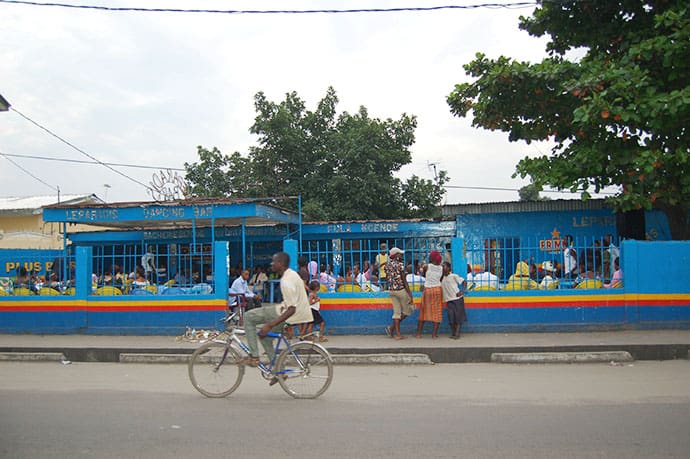
While what occurs in Kinshasa may at times seem monumental and right in plain view of everyone, Brazzaville’s problems seem forgotten and buried in the background – even by its own citizens. The city seems to have an urge to move on, and while Congo’s own political problems are still very much unresolved, the capital has in many ways restored the laidback atmosphere that its reputation was founded upon.
The city has seen plenty of attention paid to formal cultural institutions, having been the epicentre of France’s investments in central Africa for nearly a century. It rarely has the same level of traffic and noise as Kinshasa; crime barely exists, and a multi-culturalism is present in the city that Kinshasa has yet to master – European, Arab, Asian and African residents all go about their daily business beside one another, without armed guards and walls of razorwire between them.
Families from around the world have migrated to Brazzaville, set up businesses and live in the city. It is a simpler place than Kinshasa, and better integrated in every manner.
Goma
Black volcanic rocks permeate Goma’s landscape, lending it a unique look amongst the towns and cities of the DR Congo. They are everywhere – used to build walls, roads, crushed and reconstituted into bricks; the city is a mixture of diffused black and grey colours surrounded by the lush green hills which create some of the best farmland in Africa – and, on occasion, nearby volcanoes erupt and demolish the town in its entirety. Huge lava fields northwest of Goma attest to the precarious position that the city maintains.
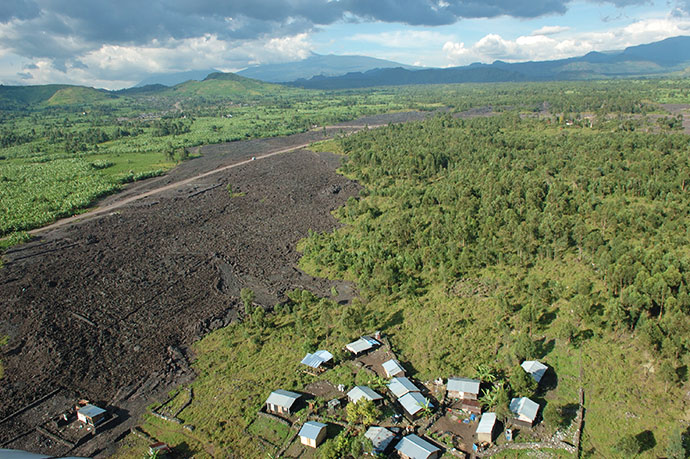
Goma’s town centre was destroyed in 2002 by Mount Nyiragongo, the fourth time in a century that a major eruption had occurred in the region. It erased whatever may have existed of the area in decades past. In some older single-storey buildings, the attentive will notice that they are actually the top level of what were once two-storey buildings.
The city plods along, 2m higher than it was at the beginning of the millennium, with an increased focus on construction and development. It has been designated as tourist capital of the DR Congo, and will undoubtedly be the first port of entry for large numbers of visitors to the country. While unique in its own right as a town built on a lava flow, it is really the surrounding sights that make Goma so important – specifically Virunga Park and Lake Kivu.
Kinshasa
Rising out of the jungle unlike any other sight in central Africa are Kinshasa’s towers, its lights, its chaos, its squalor. After spending weeks or months inside the far reaches of the Congos and arriving onto the paved yet pot-holed streets of the capital, one can easily be overwhelmed – quiet evenings of darkness are overtaken by raucous clubs, cluttered evening markets, throngs of touts and beggars.
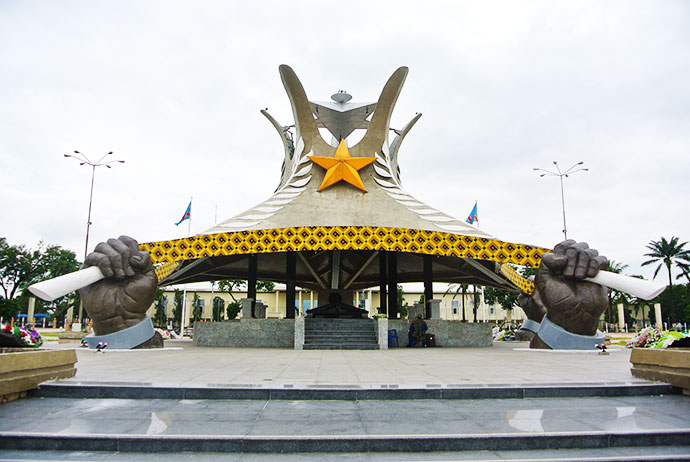
Truly maddening traffic unseen anywhere else in the Congos clogs the streets – from barely operating minibuses to convoys of tinted cars, thousands of people on the move in every direction, unknown faces of unknown people lurking in the corners of abandoned buildings, all living side by side in Kinshasa.
It is a cultural Mecca, a calling place for the dreams and fortunes of all Congolese from either country of the same name. Inundated with an influx of refugees as war raged in the east, as well as exploding with an expatriate population arriving to bring stability to the nation, its numbers have swelled beyond any previous notions of size. It is said that now, Kinshasa is the world’s most populous francophone city: surpassing Paris and Montreal, and almost exceeding both of them combined. It is still a city of deep divisions between rich and poor, of garish excess and poverty living as neighbours, with the protected enclaves of a few international hotels, embassies and golf courses keeping the huddled masses at bay. It is as diverse and intimidating as any of Africa’s largest cities. It is definitely not a place to miss – and indeed, it is hard to be in the west of DR Congo without passing through.
Kisangani River
On your list of things not to miss in the DR Congo should be the Wagenia fishermen, doing their business just in front of the Wagenia Falls. These villagers have been using an interesting tactic of catching fish along the river with large conical baskets suspended from wooden frames across the river.
It’s a unique sight and well worth visiting. The fishermen have taken it upon themselves to provide guiding tours to anyone who shows up, and charge US$30 for the privilege. There is a village on a small island in the middle of the river, and they may convince you to take a pirogue across and meet the chief; if that’s your interest it should run to an extra US$20.
Lubumbashi
Lubumbashi is a unique city in the DR Congo: with clean, wide streets, its citizens have taken an active interest in the appearance of their town.
The old colonial façades are recently painted, squalor is at least hidden away rather than in direct sight. It has two notable religious landmarks, a pleasant downtown centre, and a wide variety of amenities for an ever-increasing number of foreigners who pass through.
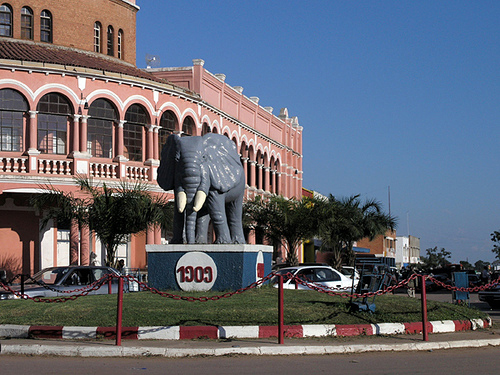
It’s a pleasant place to spend any amount of time, and indeed the attitude towards those going about their business in Lubumbashi is seemingly more relaxed than that of cities further north.
The anglophone influence, as well, is undeniable here. Many people are prone to speak some English, with Zambia only a few hours’ drive away. Most Katangese around Lubumbashi have at least visited their neighbour, and are more in touch with the world of English Africa. This makes it easier for the anglophone to get around, though corruption is just as much a problem as anywhere else in the nation.
Nouabalé-Ndoki National Park
This is quickly becoming a prime attraction for visitors to Congo, bringing tour groups directly into the Pokola base camp and on guided tours from there in. In 1990, it began as an extension of the Dzanga-Sangha Special Reserve in the Central African Republic and was initially simply a faunal reserve; as a result of the efforts from conservation groups worldwide, it has since become a fully fledged national park.
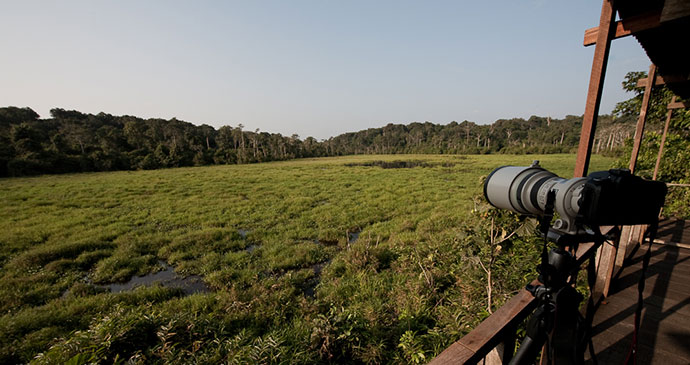
On occasion this area is referred to as the Sangha Tri-National Reserves, with the Lobeke National Park in Cameroon further extending the protected area. WCS Congo has hired several dozen Ecoguards to monitor the entire reserve and in so doing reducing the frequency of illegal hunting and logging when compared with other reserves and parks throughout either Congo. The guards work closely with the Ministry of Forest and Environment in Brazzaville, and the ministry has ensured that the park remains a protected region.
All of this means that Nouabalé-Ndoki is quickly becoming a very popular place to witness one of the last undeveloped wilderness regions on the African continent. It has several villages within its boundaries, including Pygmy settlements, and these people have also been enlisted by conservation groups to protect the landscape.
Large mammals are generally undisturbed in the area, and due to a well-maintained airstrip directly on the edge of the park in addition to regular commercial flights from Brazzaville, it has become easily accessible for those interested in visiting.
Pointe Noire
A city like no other in the Congos, Pointe Noire is a strange adjustment from the usual grinding difficulties that punctuate travelling in the region.
Sitting as a bustling medium-sized city on the far west coast of central Africa, it is a unique place – with beautifully paved streets, numerous towers, piles of beautifully painted mansions and more private cars, restaurants and discotheques than the rest of the country combined.
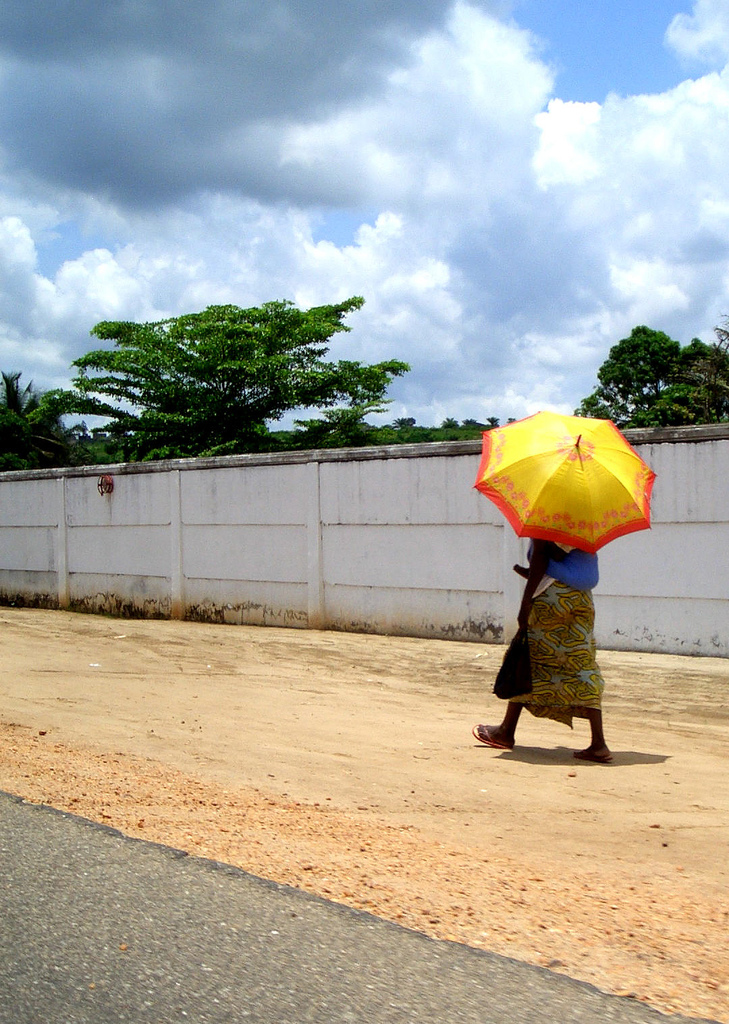
It can be disconcerting to see the nation’s wealth concentrated so heavily in one place, and even more so given that these people never had to endure the open combat that Congo’s other two major cities, Brazzaville and Dolisie, struggled to emerge from.
The Congo River
Stretching from the Atlantic Ocean and slowly winding its way in a lazy coil eastward is the Congo River, bisecting both countries and a lifeline for the deep interior of central Africa.
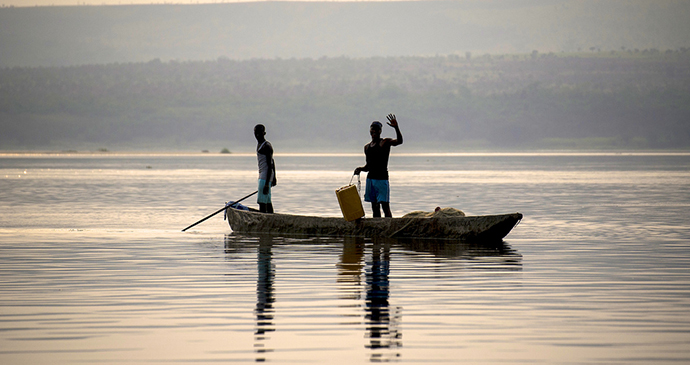
Second longest on the continent at over 4,300km, it stretches from the hills near Lake Tanganyika northward, then eases west and then south again to drain into the Atlantic. Two sets of rapids make the river impossible to navigate directly from source to sea, and the widest section is between the almost-lake formation of Malebo Pool and the falls near Kisangani.
The bays along the ocean have made excellent harbours and are home to a vibrant economy based on fish and other resources.
The Salongas
In fact two parks located in the heart of the DR Congo, Salonga North and Salonga South, the Salonga Park stands as one of the most untouched regions of the country. Its focus is the protection of the equatorial forests and wetlands that occupy the middle of the DR Congo, criss-crossed with far more rivers than roads.
It is currently the largest rainforest park in Africa, occupying over 36,000km2. It was designated as a natural reserve in 1933 and became a national park in November 1970 under Mobutu Sésé Seko. UNESCO added it to the World Heritage List in 1984.
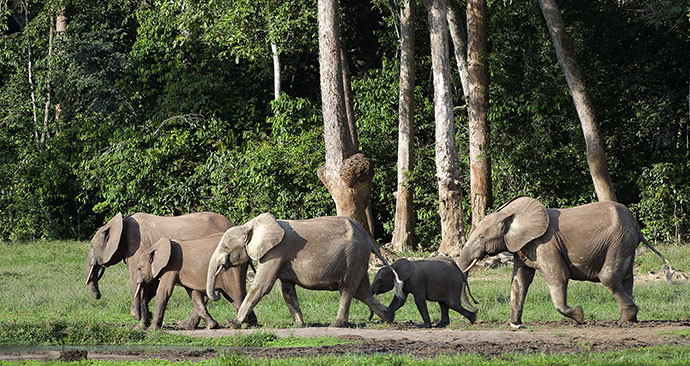
A 45km-wide corridor splits the two parks, allowing the local populations to navigate the region without disturbing the nature reserves. A road follows this corridor southeast from Boende, though like most roads in the DR Congo, it is barely functional. Fewer than 1,500 people live within the parks themselves.
The Salongas are home to some exceptionally rare creatures, including the bonobo, a species unique to the region. Also look for the slender-snouted crocodile, more forest elephants, giant pangolins, and some of the largest remaining hippo populations.
Birdlife is vibrant, and the rare Congo peacock makes its home in the region. Other large mammals common to the DR Congo are in the Salongas as well – buffalo, bongo, leopard and duiker have all been recorded in the vicinity.
Virunga National Park
If there is one park in all of Africa that you should visit, it is Virunga. This is more than mere hyperbole: it is easily the most varied region on the continent, if not one of the most varied on the planet. It is home to two of the world’s most active volcanoes, the largest remaining population of mountain gorillas, and a mountain range that boasts the only glaciers in Africa.
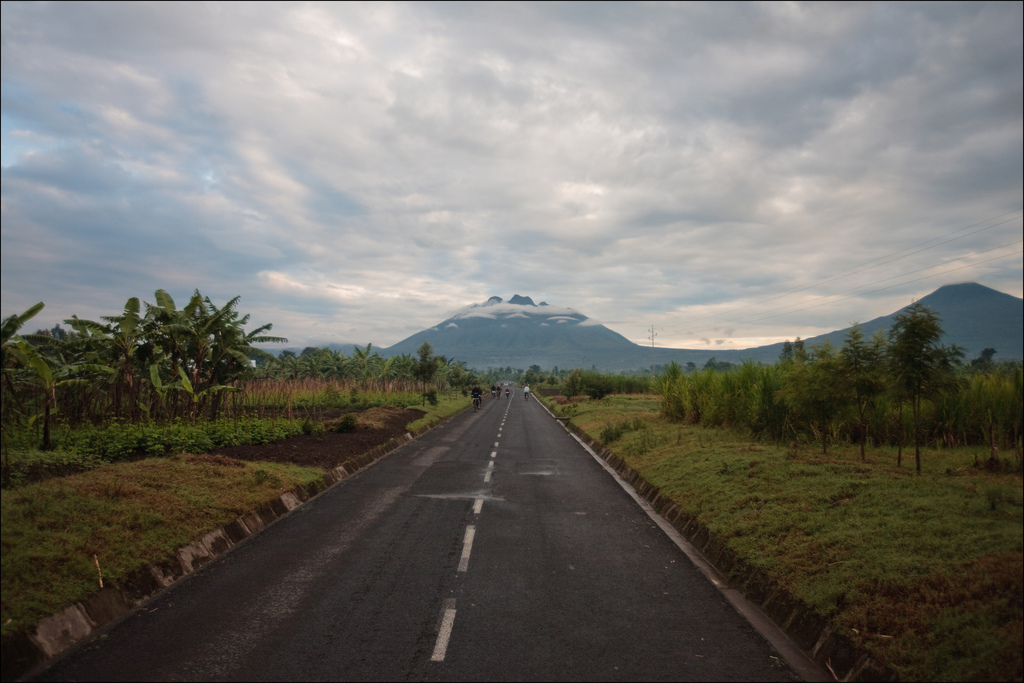
Also it’s the only park in the world to have populations of three great ape species: the mountain gorilla, the lowland gorilla and the chimpanzee. These are only the highlights: there are also the Rwindi Plains, a great place for a classic east African wildlife excursion; and Lake Edward, still one of the best places to see large groups of hippos going about their daily activities.
There is also Mount Tshiaberimu, with a small population of gorillas that was only habituated to human presence in 2001 and, according to research, could be a new subspecies, and there is also the Tongo Chimpanzee Reserve, the first place of its kind to protect the natural habitat of this creature.
Related books
For more information, check out our guide to Congo:
Related articles
Nothing found.
